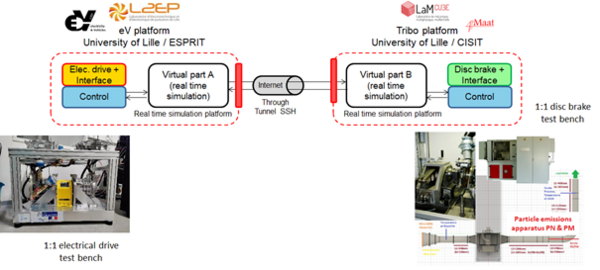Traction-braking Integrated with Modularity
Particle and noise emissions from vehicle braking systems are a major public health issue. The use of regenerative braking in battery electric vehicles could help reduce these emissions. Nevertheless, the reduced use of mechanical brakes alters the tribological phenomena at the interface, which can lead to the appearance of noise and vibration. Recent studies also show that fine particle emissions can remain at levels similar to those of internal combustion engine vehicles, mainly due to the increased weight and performance of electric vehicles. In this context of reducing emissions, recent advances are promoting the development of new friction materials or the introduction of surface treatments. In the TIM (Traction-braking Integrated with Modularity) project, another path for reduction has been selected. It aims to develop an intelligent energy management strategy to simultaneously optimize electrical and mechanical braking, reducing emissions while maximizing energy recovery. The approach will rely on a systemic analysis through multidisciplinary, coupled modeling of the electrical and mechanical braking subsystems. A demonstrator (see the picture) will be established between the experimental platforms of the two involved laboratories (L2EP and LaMcube). The modeling will also be explored across different driving cycles. Furthermore, various automotive segments will be used to test the modularity of the energy management strategy of the brakes.

Partners:


Supports:












